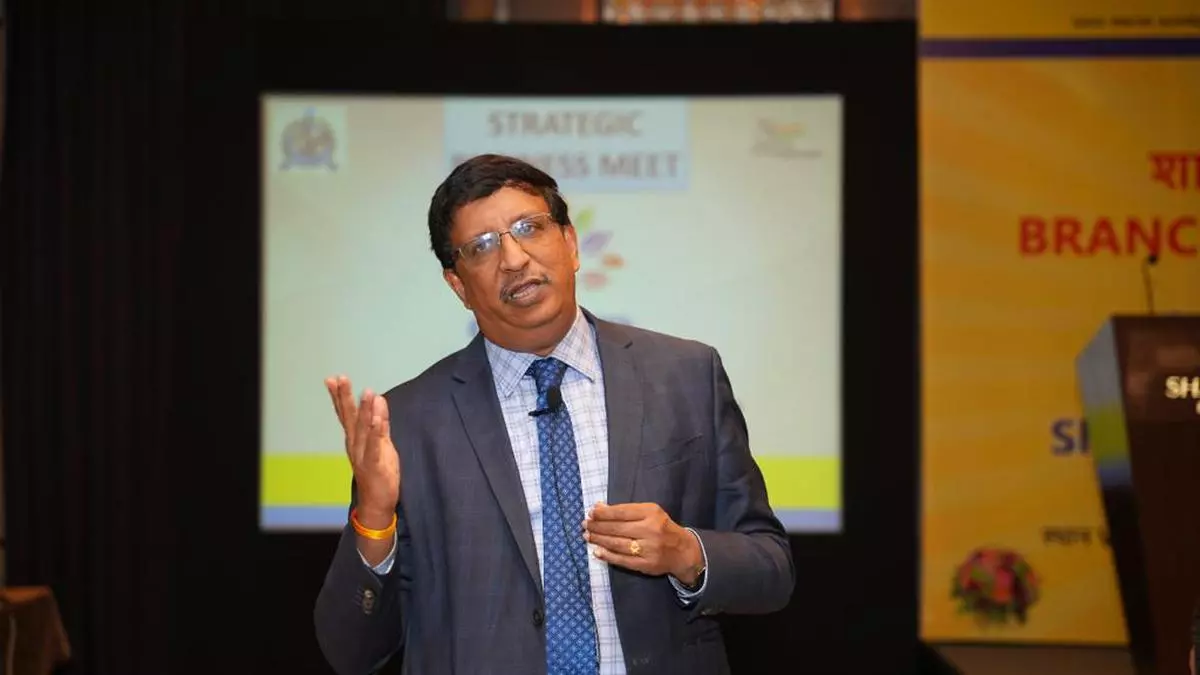No Reason Why We Shouldn’t Be Funding Adani Group: Managing Director, UCO Bank
So far, five banks—some of the biggest players in the public and commercial sectors—have acknowledged their exposure to the Adani Group.

According to UCO Bank‘s chief executive officer and managing director, Soma Sankara Prasad, the bank will keep lending to the Adani Group as long as it believes that the projects are feasible from a business standpoint. If it’s a financially viable proposition, Prasad said, “I believe, there’s no reason why we shouldn’t be funding the group”. As a written report by Hindenburg in January 2023 challenged the accounting procedures and pricing of Adani group companies, the stock market saw a significant sell-off of Adani corporate.
According to Hindenburg Research, it has short holdings in the Adani Group through derivatives traded outside of India and US-listed bonds. Concerns have been raised about the future of the loans and the repayment status of the lenders to the Adani Group. So far, five banks—some of the biggest players in the public and commercial sectors—have acknowledged their exposure to the Adani Group.
UCO Bank’s Prasad stated that the bank will consider the project’s viability, if all the tie-ups are in place, debt and equity have been finalized, and what type of demand there is for the good or service it wants to sell before giving further loans to the group. The group possessed reliable assets on the ground, according to the MD & CEO. “We consistently receive our repayments. Thus, there is no need for concern regarding those exposures “he explained.
Position of other banks
Sanjiv Chadha, MD and CEO of Bank of Baroda stated earlier that if the account passed the lender’s underwriting standards, his bank would continue to lend to the Adani group. Dinesh Khara, the chairman of State Bank of India (SBI), stated on February 3 that the bank’s exposure to the Adani group was approximately Rs 27,000 crore, or 0.8 to 0.9 percent of its loan book and that repayments were on schedule, suggesting that there had not yet been a reason for alarm.

“We have given Adani loans for projects that have real assets and sufficient cash flow. They can fulfill their duties. It just represents 0.8–0.9% of our loan book, Khara stated at a news briefing following the release of the bank’s third-quarter financial results. Atul Kumar Goel, MD and CEO of the state-run Punjab National Bank (PNB) said on February 24 that the bank is closely monitoring developments involving the Adani group.
Those with knowledge of the matter claim that the RBI is looking into the details of banks’ exposure to the Adani group entities and has enquired as to the status of these loans. According to one of the people, the RBI has already contacted some of the large banks that are lenders to the group and is speaking with them to confirm the specifics of their exposure.
How much does Adani owe Indian banks, and is this a warning?
Indian banks are not at risk from the debt of the Adani Group, according to reports from brokerages Jefferies and CSLA. According to research by the international brokerage firm CSLA, less than 40% of the total debt of the Adani group is funded by banks. Financial institutions that deal in bonds and foreign banks are thought to make up a larger portion of it. But, according to Jefferies, the Adani Group’s exposure to Indian banks is ‘within reasonable boundaries.
This comes at a time when the Gautam Adani-led Adani Group is facing criticism after US short-seller Hindenburg Research disclosed that it had short positions in the company. The firm accused the Adani Group of improperly using offshore tax havens and raising concerns about the company’s high debt levels, which caused the Group stocks to crash. Even if the debt levels of the Adani Group doubled over the last three years, from Rs. 1 lakh crore to Rs. 2 lakh crore, the total bank debt climbed by more than 25%, according to CSLA. Less than 40% of Indian banks’ exposure to debt and less than 10% of private banks’ exposure are both low.
“Indian banks only pose a threat to around 40% of the entire group debt. A majority of banks (including ICICI/Axis) have acknowledged that they have financed the bulk of assets with high cashflows, such as airports and ports, according to CSLA. The exposure of private banks to this is less than 10% of the overall group debt.
Although having a sizable level of debt (about 30% of the total group debt), PSU banks have not seen an increase in this debt over the past three years.

According to CLSA, the majority of additional finance for the group’s purchases and new endeavors has come from outside sources. According to CLSA, PSU banks’ exposure for FY24 is 0.7 percent of loans and 6 percent of net worth. As a percentage of the total group debt, bank lending has considerably declined, according to CLSA, which claims that over the previous three years, business units have only received mortgages totaling $15,000 crore, or 15% of the $1 lakh crore total group debt.
Significant purchases like those of the cement businesses ACC and Ambuja have all of their funding from foreign banks. The Adani Group’s exposure to Indian banks is within reasonable norms, according to global stockbroker Jefferies. Adani Group has disclosed information about its debt and leverage levels in response to recent worries. Excluding shareholder sub-debt, total debt is at 1.6 trillion, and the debt-to-EBITDA ratio has decreased from 4.3 to 3.2 times since FY16. The acquisition of the cement business may increase the debt by almost $600 billion but increase cash flow.
Diversifying the mix of borrowing has reduced Indian banks’ stake to 33% of debt and 0.5% of sector loans, leaving the remaining debt to international banks or bonds. “We monitor developments but believe that banks face little risks,” the note said. The debt owed by the Adani Group makes up 0.5% of all loans made by Indian banks.
Debt as a percentage of total loans is 0.7% for public sector banks (PSU) and 0.3% for private banks. Spread among group firms, the Adani group has a consolidated gross debt of 1.9 trillion rupees and a net debt of 1.6 trillion rupees. With between $300 and $400 billion in net debt apiece, Adani Green Energy (AGEL), Adani Power (APL), and Adani Ports and SEZ (APSEZ) are the top 3 firms by net debt levels.

“We comprehend that this corporation generates a respectable amount of cash flow notwithstanding the acquisition of the cement business for $600 billion (including a $200 billion preferential allocation). We project that between FY16 and FY22, net debt levels increased from $0.7 trillion to $1.6 trillion due to investment in group companies,” the underlined note. According to a tweet from Indian Banks Have An Intrinsic Compounding, 38% of the group’s debt is made up of Indian banks’ exposure of 38,000 core. It accounts for 6% of the net worth of PSU banks and 1.4% of the network of the private sector.
The Central Bank of India’s guidelines were followed, according to major public sector banks, while determining their exposure to the Adani Group. The RBI states that a bank may not expose any one group of linked businesses to more than 25% of its available eligible capital base. The chairman of State Bank of India, the biggest lender in the country, Dinesh Kumar Khara, told Reuters that the company’s exposure to it is not concerning and that there are no current concerns.
An official from the government-run Bank of India stressed that the lending company’s payments to the Adani team stayed within the established limitations, in contrast to executives from two other private lenders who said that they were not yet in “panic mode” but rather were paying attention. An executive at the Bank of India remarked, under the condition of anonymity since the information was private, “Our exposure to the Adani Group is below the significant exposure framework of the Reserve Bank of India.”




